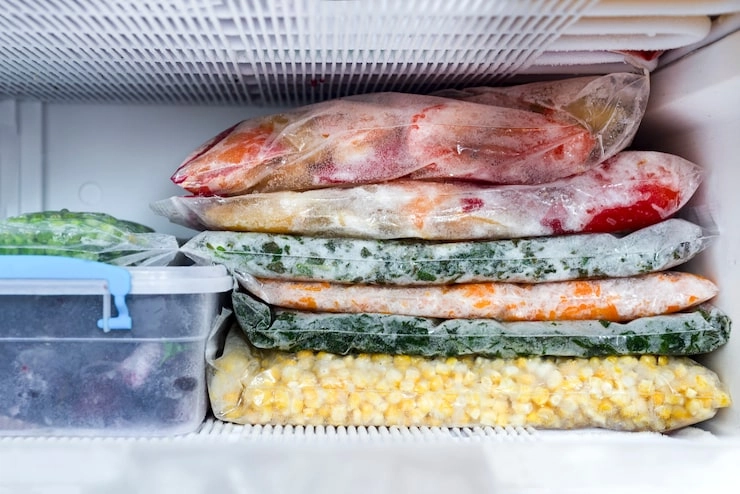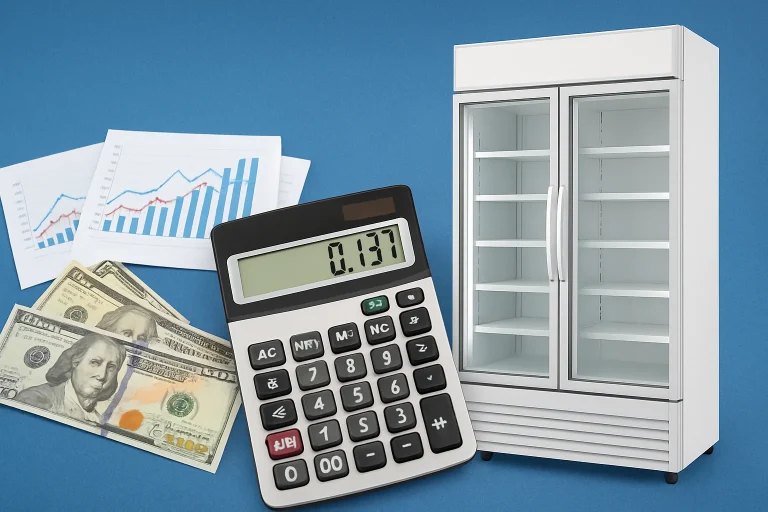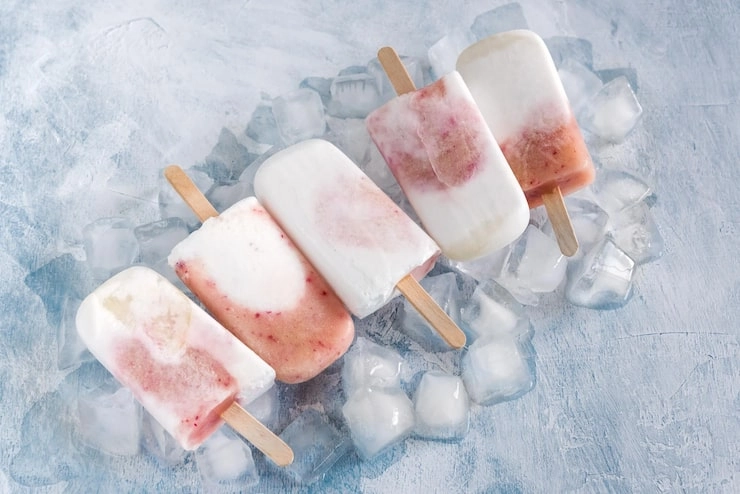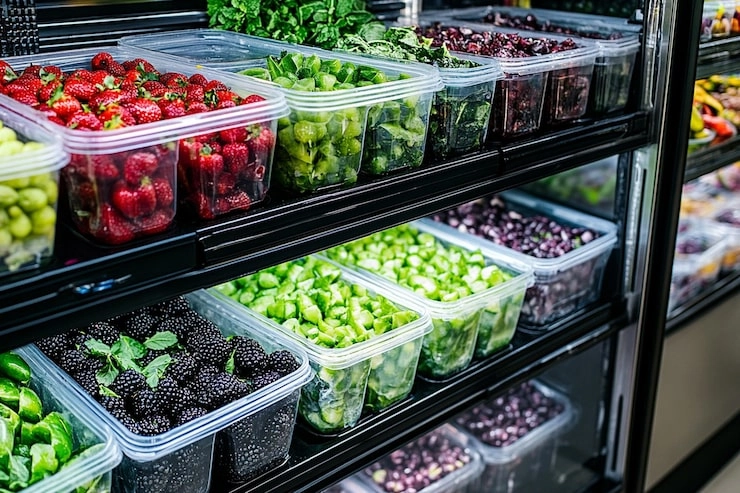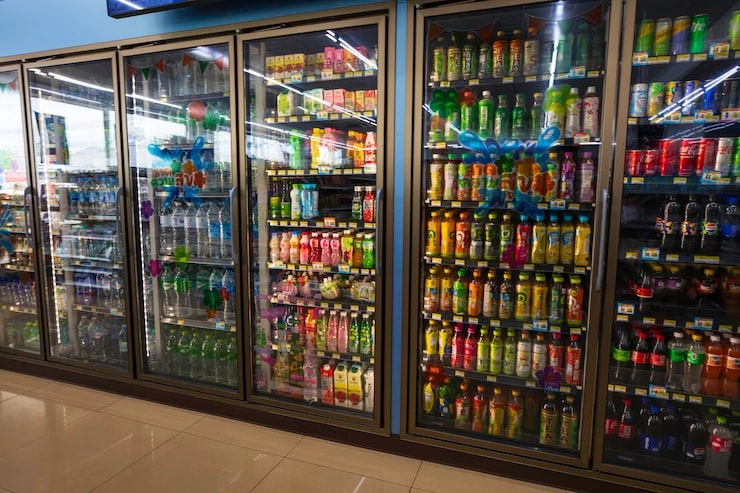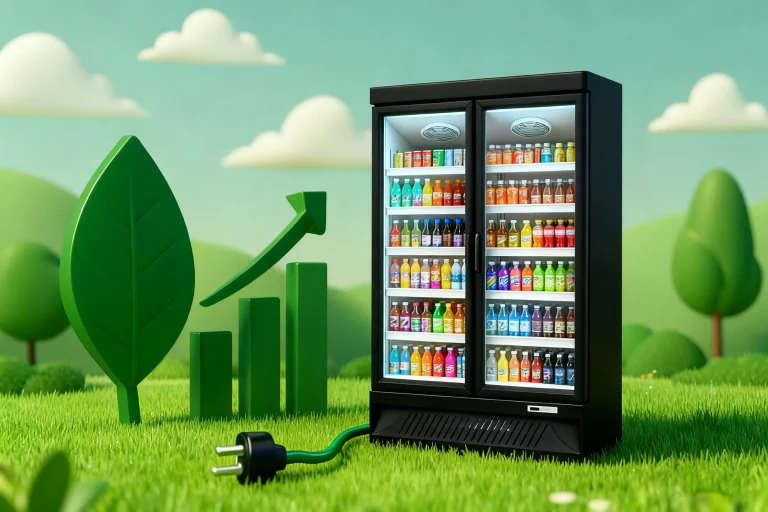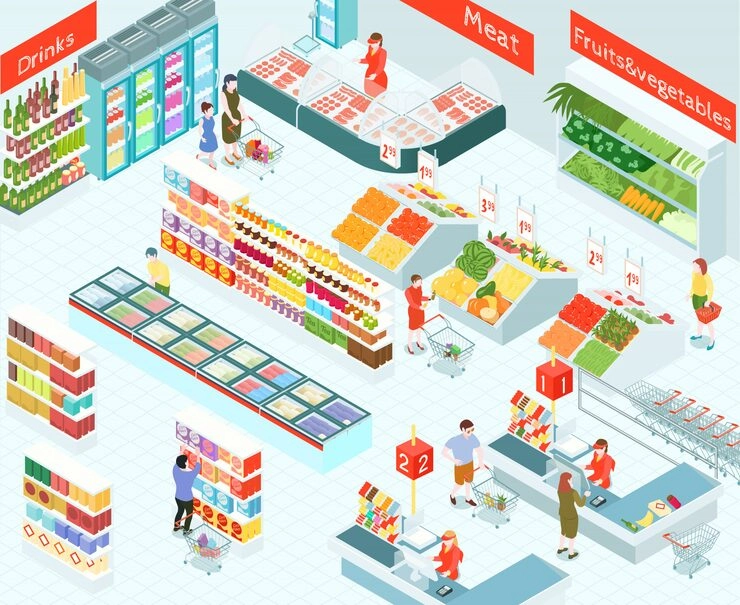A refrigerator’s job is to keep your food fresh and cool. But when it starts turning your lettuce into ice cubes or your milk into a slushie, it’s a real pain. This overcooling doesn’t just ruin the flavor and texture of your groceries—it also hikes up your energy bill and can wear out your fridge faster than you’d like. This blog’s got the answers.
Common Signs Your Fridge is Freezing Food
Ever opened your fridge to find frosty veggies in the crisper? Or maybe your eggs are frozen solid, and there’s ice creeping up the back wall. Sound familiar? You’re not the only one wondering, “Why’s my fridge turning everything into a popsicle?”
Why This Issue Should Not Be Ignored
Overcooling isn’t just annoying. It wastes food, jacks up your electricity costs, and can even mess up your fridge’s insides over time. Fixing it pronto keeps your appliance humming and your groceries safe.
Reasons Your Refrigerator Is Freezing Everything
A bunch of things—some mechanical, some user slip-ups—can make your fridge too chilly.
- Wrong Temperature Settings: Cranking the dial too low is a common goof. The sweet spot for your fridge is 34°F to 39°F (1°C to 4°C). Go colder, and you’re begging for frozen milk. Simple as that.
- Busted Thermostat or Sensor: If the thermostat or sensor’s on the fritz, it might tell the compressor to keep running. This drops the temp way below what you want.
- Clogged Air Vents: Vents move cold air around. Block them with bags or containers, and cold air gets stuck in one spot, freezing whatever’s nearby.
- Faulty Damper Control: The damper decides how much chilly air flows from the freezer to the fridge. If it’s stuck open, too much cold air sneaks in. Your food pays the price.
- Defrost System Problems: A broken defrost timer or heater lets ice pile up on the coils. This makes the compressor work overtime, cooling everything too much.
- Overstuffed or Messy Fridge: Cram too much in, and airflow gets blocked. Some spots end up way colder than others, creating frozen patches.
Effects of Overcooling on Food and Appliance Performance
Overcooling does more than just ice up your veggies—it hits your wallet and your fridge’s health.
- Nutrient Loss and Texture Damage: Freezing wrecks the structure of fruits and veggies, leaving them soggy when they thaw. Dairy might curdle, and eggs can crack. Not cool.
- Higher Energy Bills and Wear: A compressor that’s always on guzzles power. Plus, it stresses out parts like fans and motors, shortening their lifespan.
- Spoilage Risk: Here’s the kicker—overcooling doesn’t always mean better preservation. Frozen greens might look okay but spoil fast once they thaw because their cells are shot.
How to Prevent Your Refrigerator from Freezing Food
You can stop this freezing nonsense with a few smart moves.
- Dial in the Right Temp: Keep the fridge between 34°F and 39°F (1°C to 4°C). For the freezer, aim for 0°F (-18°C). Check it regularly.
- Store Food Wisely: Don’t shove stuff right in front of vents. Use crisper drawers for veggies—they’re built for it. This keeps air moving smoothly.
- Maintain Your Fridge: Clean the condenser coils twice a year with a brush or vacuum. Dusty coils make the fridge work harder. Also, inspect door seals. Cracked ones let in air, triggering extra cooling.
- Call a Pro When Needed: If tweaking the temp doesn’t help, or you hear weird noises like humming or clicking, get a technician. Error codes on a digital display? That’s a sign something’s up.
Features That Help Prevent Overcooling in Modern Refrigerators
New fridges come with slick tech to keep freezing at bay.
- Smart Thermostats: These use sensors to monitor temps in real time. They adjust cooling on the fly, so no part gets too frosty.
- Multi-Zone Cooling: Different sections get their own temp controls. This means your lettuce stays crisp while your ice cream stays frozen—without mixing things up.
- Auto-Defrost Systems: These stop ice from building up on coils. No ice means the fridge doesn’t overcool to compensate.
These features are a game-changer, especially for businesses where food safety is a big deal. Companies like Create Refrigeration nail this in commercial settings.
A Look at Commercial Solutions: Create Refrigeration
Based in Shandong, China, Create Refrigeration builds top-notch commercial gear that meets global standards. Their stuff focuses on saving energy, running smoothly, and keeping food safe. They offer custom setups for businesses needing reliable cold storage.
Overview of Create Refrigeration’s Product Range
Their lineup is built for stores and restaurants, including:
- Upright Glass Door Freezers: Perfect for shops, from corner stores to big supermarkets. These have self-closing, double-insulated glass doors to save energy.
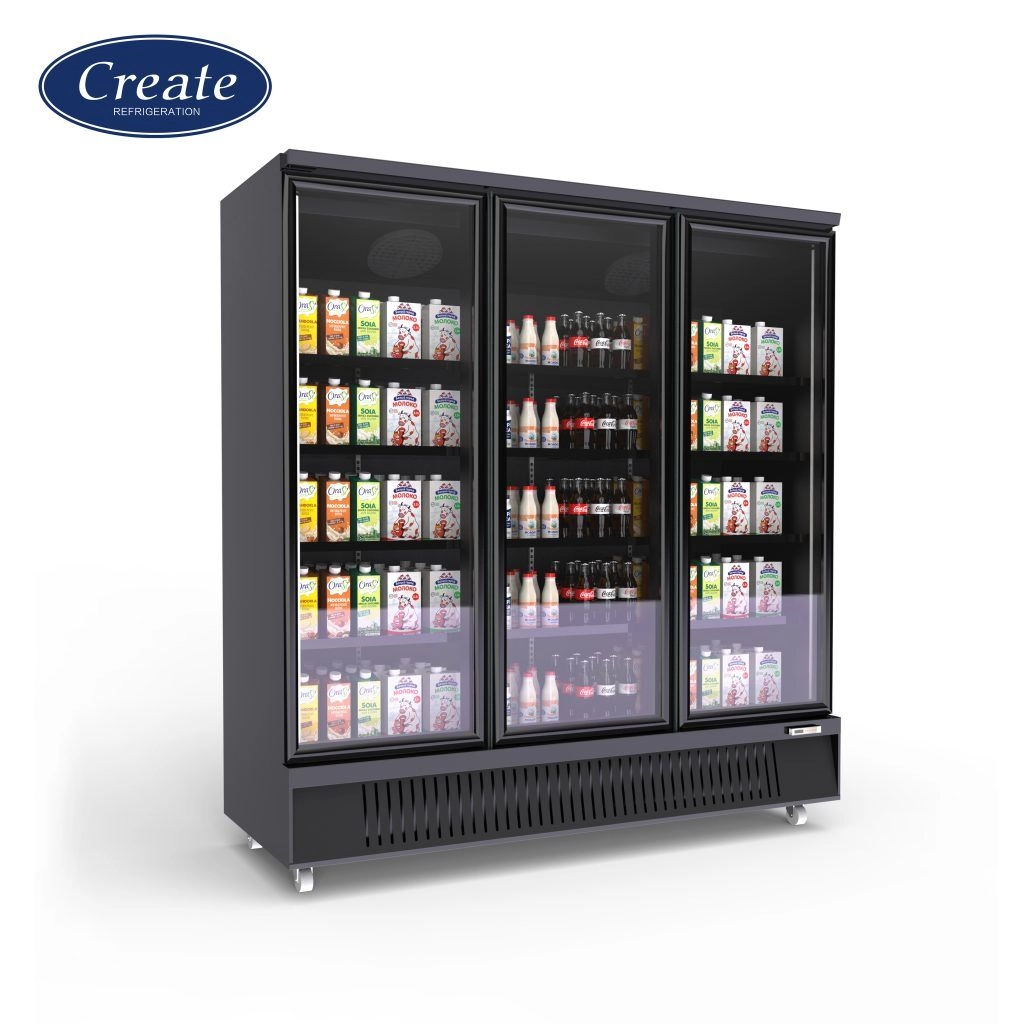
- Meat Display Chillers: Made for showing off meat, seafood, or ready-to-eat dishes. They use special lighting and air ducts to keep temps even and food looking good.
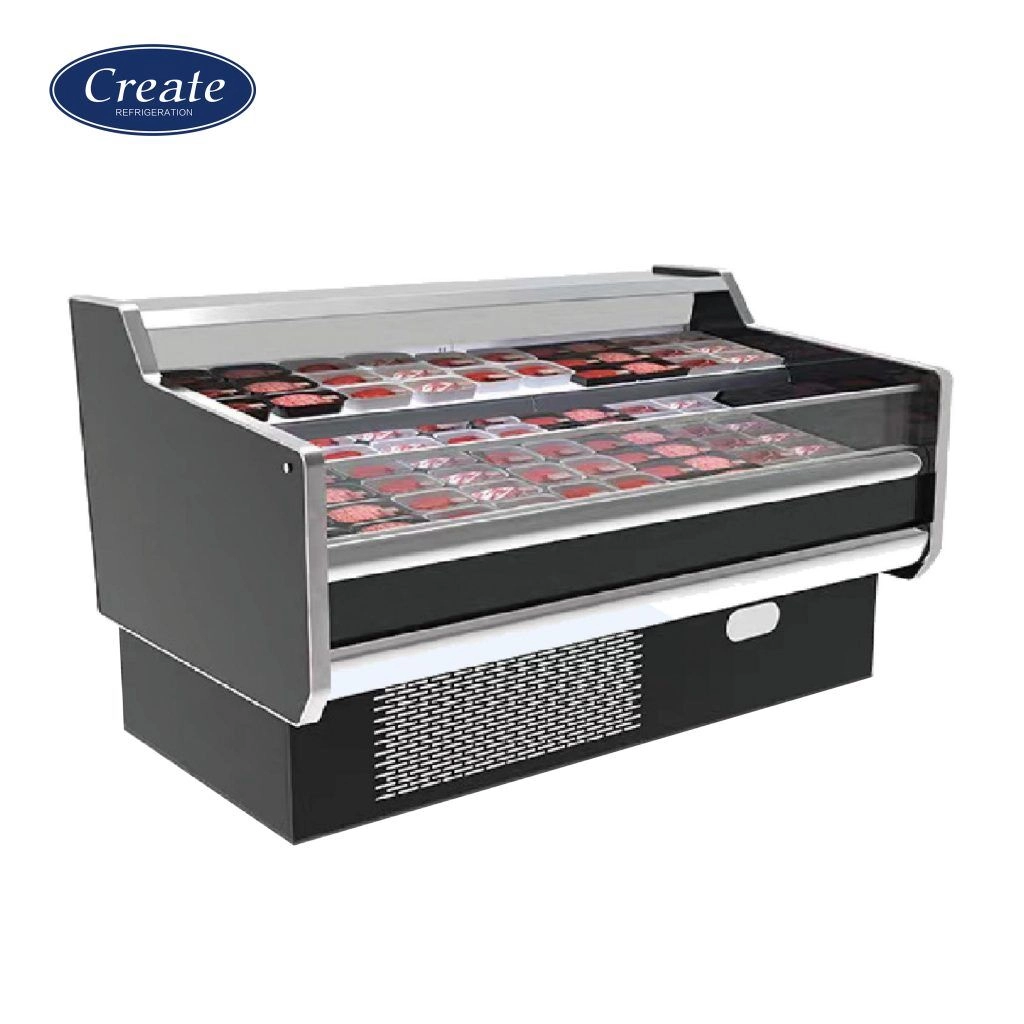
Key Features of Create Refrigeration Products
- Energy Savings: Their inverter compressors cut power use by up to 50%. That’s a big deal for keeping costs low.
- Top-Notch Parts: They use reliable components like Secop compressors and Elitech thermostats. These ensure steady temps, which is key to avoiding overcooling in busy settings.
- Easy-to-Use Design: Features like sliding glass tops on island freezers and bright LED displays make life easier for staff and customers.
Summary of Key Points
Overcooling happens when settings are off or parts like sensors or dampers go haywire. It ruins food and spikes costs. To fix it, set your fridge to 34–39°F, keep vents clear, and clean coils regularly. Modern fridges use smart tech like multi-zone cooling to stop freezing automatically. For businesses, brands like Create Refrigeration bring these ideas to life with efficient, reliable gear.
FAQs
Q1: Why’s my fridge freezing stuff even when the settings seem fine?
A: A busted thermostat or sensor might be misreading the temp. Even if the dial looks right, a faulty part can make the fridge overcool. Get it checked.
Q2: How do I keep my veggies from turning into ice?
A: Don’t stick them near vents where cold air blasts out. Use crisper drawers—they’re made to protect produce. Also, double-check that your fridge is between 34°F and 39°F.
Q3: Are there fridges that stop this problem on their own?
A: You bet. Newer models with smart thermostats and multi-zone cooling keep each section just right. They adjust temps automatically, so you don’t have to play guessing games.

